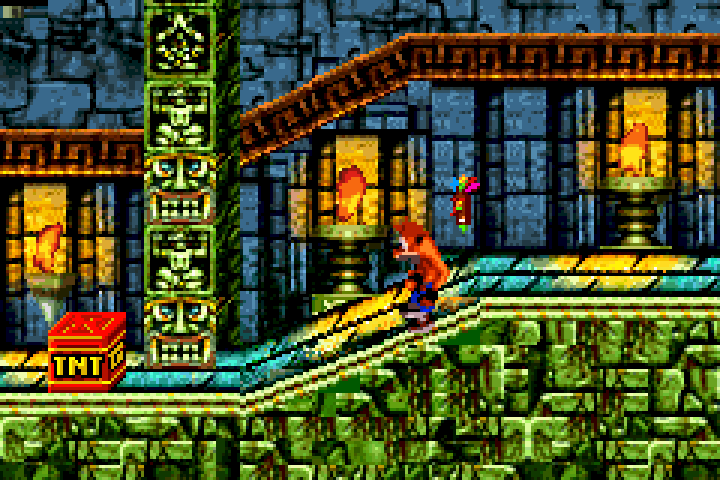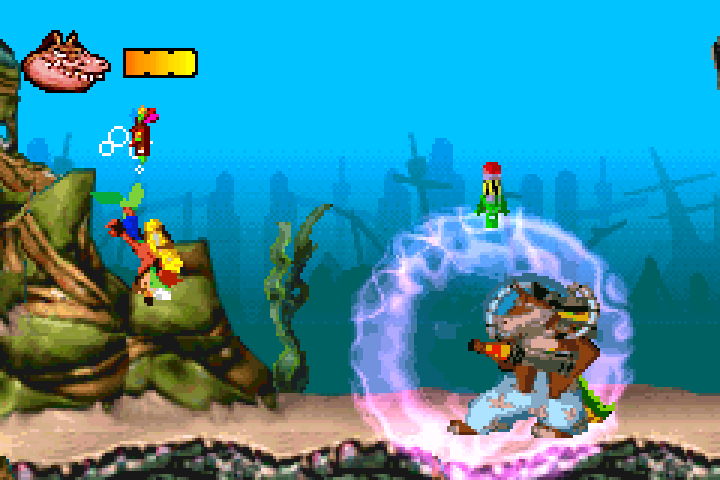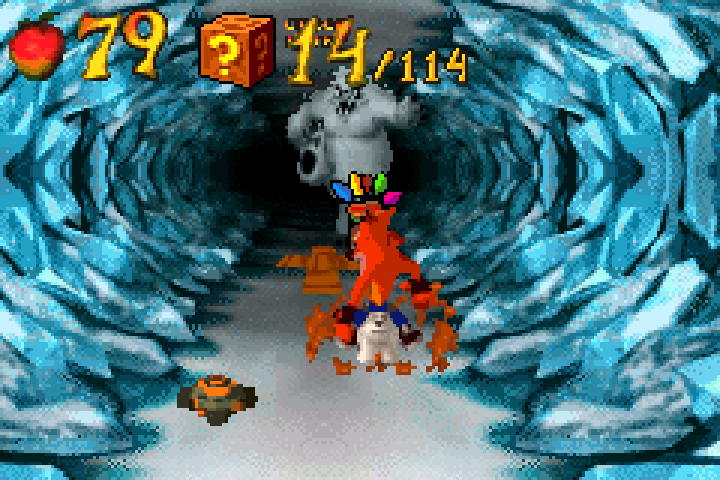- Genre: Platformer
- Platform: GBA
Sometimes I just don’t know what I want to play, so I let a little backlog chooser I wrote pick for me. This is one of those times. I’ve got a bit of a love/hate relationship with the Crash series. I generally like the gameplay, but the PS1 games in particular always felt unnecessarily punishing to me. Crash 4 really felt like a change for me in terms of avoiding that punishment factor, though I hadn’t played the older post-Naughty Dog entries. As it turns out, some of the things I liked about Crash 4 and its small iterations to reduce punishment had already been started in this game.
It didn’t really dawn on me how much I was not getting angry at the game until I realized I had nearly completed it, and there’s a few things that really fed into that compared to the 2D sections of the PS1 game. The jumps are a little more forgiving, so you aren’t falling into gaps. Fruit and extra lives are a little more common, so you aren’t constantly fighting progression loss from game overs. Aku Aku is a little bit more present, so you’ve got a higher likelihood of second chances if you miss knocking out an enemy.
Like I said in the Crash 4 ramblings, it all leads to reduced user friction. It’s not that this game is mechanically that different. It’s bouncing off crates and sliding under low ceilings and spin jumping to take out enemies; there was plenty of that on the PS1 games. It’s not even necessarily that much easier in that I was still dying a lot. What it is is challenging in a way that lets the player get through based on their skill without progression loss, rather than the challenge being around trying not to get a game over. It lets the player be risky and working at a fast pace, rather than slowing to a crawl just to stay alive. It’s ultimately just a lot more fun.
The rest of this is pretty standard fare as far as Crash games go, so there’s not much else to add. It was nice just kind of falling into a game without expectations and enjoying it so much. It was even more nice seeing that the lessons from Crash 4 weren’t something that happened after years of down time, but were instead something that was starting to happen years ago. Given the platform this was on, it makes sense that the series would try to be a little more forgiving, but it worked out in a way that really made the game more fun, and that’s something that will always work out.





